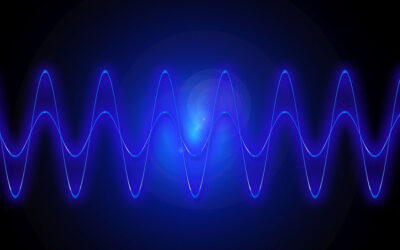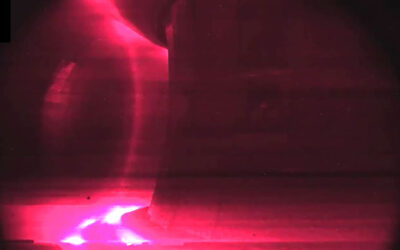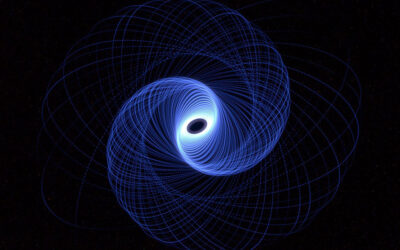In a major leap forward for particle accelerator technology, researchers at the SLAC National Accelerator Laboratory have created ultra-dense electron beams with peak electric currents five times greater than previously achieved. By using infrared laser pulses to precisely shape the beams, the team has opened new possibilities for probing high-energy physics, recreating extreme astrophysical conditions, and advancing material science techniques.
“Not only can we create such a powerful electron beam, but we’re also able to control the beam in ways that are customizable and on demand, which means we can probe a much wider range of physical and chemical phenomena than ever before,” Claudio Emma, a staff scientist at SLAC and one of the study’s lead authors, said in a press release.
From the lab to stars
Electron beams are used across a broad spectrum of applications—from simulating nuclear explosions and astrophysical jets to driving novel approaches to nuclear fusion. When accelerated to high energies and focused into an ultra-short pulse, these beams can heat matter to temperatures found in stellar cores or trigger high-speed chemical reactions in materials.
One promising application is in materials research, where dense and ultrafast electron pulses act like high-resolution cameras, taking snapshots of rapid transformations in matter — such as when a solid turns to plasma or when a molecule undergoes a chemical reaction. But generating such beams has long posed a serious challenge.
When electrons are emitted into a beam, they don’t all move at exactly the same speed. This slight variation causes the pulse to spread out over time, weakening its intensity. Additionally, the most common method for shaping beams — using microwave fields — has limited precision, making it difficult to keep the electrons tightly packed.
Precision through infrared lasers
To overcome these limitations in their study published in Physical Review Letters, the SLAC team turned to infrared lasers, which operate at much shorter wavelengths than microwaves. These lasers allowed them to shape the electron bunches with exceptional precision, keeping the pulse compressed over longer distances.
“We can’t apply traditional methods to compress bunches of electrons at the submicron scale, while also preserving beam quality,” Emma said. “The big advantage of using a laser is that we can apply an energy modulation that’s much more precise than what we can do with microwave fields.”
The challenge, however, didn’t end with shaping the beam. After interacting with the laser over the first few meters of the accelerator tunnel, the electron bunch has to travel the rest of the kilometer-long machine while maintaining its structure. Any unwanted fluctuations in the beam can spread and degrade the signal before it reaches the target.
“We have a one-kilometer-long machine, and the laser interacts with the beam in the first 10 meters, so you have to get the shaping exactly right, then you have to transport the beam for another kilometer without losing this modulation, and you have to compress it,” Emma said. “So it wasn’t easy.”
Confirming the beam’s properties
To verify their results, the researchers analyzed the radiation emitted by the beam and how efficiently the beam ionized helium gas. Ionization depends on the beam’s density — so the better the ionization, the more tightly packed the electrons. They found that the beam performed almost exactly as predicted, confirming that their method worked as intended.
One key measurement was the peak electric current of the beam. It reached levels about five times greater than those produced by previous techniques — a milestone that could change how scientists study both matter and the fundamental forces of nature.
A tool for the future
The team is already thinking ahead. They plan to use lasers with even shorter wavelengths to improve the precision of their shaping techniques. The goal is to generate electron pulses on the attosecond scale — thousandths of a femtosecond achieved in the current study — which would allow scientists to observe previously unresolvable physical processes.
Among the many possibilities is exploring so-called “filamentation” — the thread-like structures seen in astrophysical jets and high-energy plasmas. “Scientists know that these filaments occur, but now we can test how they occur and evolve in the lab with a level of power we haven’t had before,” Emma said.
The broader scientific community will also benefit. The Facility for Advanced Accelerator Experimental Tests (FACET-II), where this research took place, is open to collaborators seeking to harness the capabilities of these new beams.
“We have a really exciting and interesting facility at FACET-II where people can come and do their experiments,” Emma said. “If you need an extreme beam, we have the tool for you, and let’s work together.”
This breakthrough not only demonstrates the power of combining precision lasers with accelerator physics — it marks a step toward an era where laboratory experiments can recreate and study some of the most extreme conditions in the universe.
Reference: Claudio Emma et al, Experimental Generation of Extreme Electron Beams for Advanced Accelerator Applications, Physical Review Letters (2025). DOI: 10.1103/PhysRevLett.134.085001.
Feature image credit: Gam-Ol on Pixabay

















